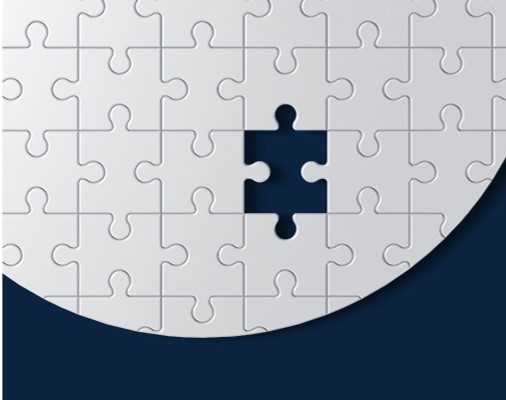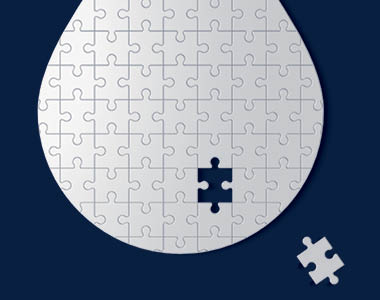
Bone health
Most people don’t think about their bones until they have a fracture or until they reach older age. However, bones are living tissue, constantly in a state of renewal, so building and maintaining bones is a lifelong matter.
Genes and lifestyle impact how strong bones are. While genetics can't be changed, people can adopt a ‘bone-friendly’ lifestyle which includes adequate calcium intake, exercise and vitamin D.
Bone health across the lifestages
Healthy, strong bones are key to leading long, healthy, active and independent lives. Poor bone health can increase the risk of developing osteoporosis, a disease characterised by low bone mass, leading to a high risk of fracture.1 In Australia, osteoporosis affects one in two women and one in three men over the age of 60 years.2
Building and maintaining strong bones is important at every life stage. For example, childhood is the greatest window of opportunity to build bone strength and ultimately reduce the risk of osteoporosis. Along with the rest of their body, children’s bones are growing rapidly throughout this period of their life.
During adolescence, over roughly two years (12–14 for girls and 13–15 for boys) teens' bodies build one-quarter of their adult bone mass, making this a critical period of rapid bone growth and important for decreasing fracture risk later in life.
By the early twenties, a person has built up as much bone as he or she will ever have. From early adulthood, bones gradually lose bone minerals such as calcium and gradually become weaker, therefore it is vital that during adulthood, daily calcium needs are met and regular exercise is important. Following menopause, women begin to lose bone mass rapidly and by the age of 65 both men and women lose bone mass at the same rate.3
Genetic predisposition can impact bone strength and while this risk factor can’t be changed, a ‘bone-friendly’ lifestyle can be adopted at any life stage.4 In a position statement and review of the literature, the US-led National Osteoporosis Foundation stated lifestyle factors are important for achieving peak bone mass and strength, and important for reducing the risk of osteoporosis.5 The key ingredients for strong bones for life include weight-bearing exercise, calcium-rich dairy foods such as milk, yoghurt and cheese and vitamin D from safe sun exposure, foods or supplements.6
Dairy, calcium and bone health
Dairy consumption is an important determinant of bone health. Calcium, one of the main minerals found in dairy foods such as milk, yoghurt and cheese is the main building block of bones that combines with other minerals (like phosphorus) to form hard crystals that give bones their strength. The body can’t create calcium so must get it from the diet. If not enough calcium-rich foods are consumed, calcium will be taken from the bones to be used for other body functions, and over time bones will become weak and brittle, leading to osteoporosis.7
The Australian Dietary Guidelines recommends the consumption of dairy foods every day.8 Milk, yoghurt and cheese provide a convenient and readily absorbable source of calcium, contributing around 60% of the calcium in the diet and research has shown that dairy foods are important for bone health and bone growth.9 For children with low calcium intakes, dairy consumption has been shown to favourably impact bone mineral content,10 while a longitudinal study of 106 children showed an average of two or more servings of dairy each day resulted in significantly better bone health in the teenage years.11
Australians have been found to not consume enough dairy foods.12 Despite its importance, calcium, is the nutrient that Australian children most commonly miss out on, with more than half of 9–16 year olds not getting their recommended amount.13 Men and women are also not consuming enough calcium.
Other essential nutrients for bones
Dairy foods are also a good source of protein, another nutrient which plays an important role in bone health as it helps build and repair bone tissue and muscles. As people become older, protein requirements increase to help maintain bone and muscle mass and reduce hip fractures.14
As well as being rich in calcium and protein, milk, cheese and yoghurt each contain a unique matrix of other nutrients such as phosphorus, magnesium and zinc that work together to support healthy bones. It is for this reason the consumption of dairy foods over calcium supplementation is preferable.15
Studies have shown calcium from dairy foods has greater effects than equivalent calcium supplements on bone mineral density – a marker of bone strength.16 Scientists have suggested that the protein and lactose in dairy may enhance calcium balance by promoting absorption.
Other non-dairy sources of calcium can be consumed, such as green leafy vegetables, nuts and cereals, however some plant foods contain phytates and oxalates that can interfere with calcium absorption.17
How to include more dairy foods in the diet
With a wide variety of dairy foods available, it’s easy to enjoy the recommended amount every day.
- Include yoghurt on cereal at breakfast time.
- Grab a latte on the way to work.
- Try ricotta cheese in a salad sandwich.
- Have a smoothie or milkshake for afternoon tea.
- For a creamy soup, stir in a generous splash of milk.
- Mix together spreadable cream cheese and vanilla bean yoghurt, then layer with nuts and berries for a dessert.
- Serve curries with a generous dollop of yoghurt.
- Toss steamed potato wedges in parmesan cheese before roasting for a great side dish or snack.
For more healthy meal ideas check out our recipe books.
Bone health resources
Osteoporosis fact sheets
Download the Osteoporosis fact sheet
Download the Patient fact sheet
Bone health infographic
Download the Bone health in Australia infographic
Bone health white paper
Dairy Australia collaborated with Griffith University’s, Professor Belinda Beck to produce the white paper, Lifestyle Management of Bone Health, designed to help keep health professionals up to date with the latest nutrition and bone health recommendations.
Download the Lifestyle management of bone health white paper
1 Osteoporosis Australia. What is Osteoporosis? [Internet]. Osteoporosis Australia, Glede, 2014. Available from: http://www.osteoporosis.org.au/what-it
2 Australian Bureau of Statistics [Internet]. Canberra: ABS; 2015. Australian Health Survey: Nutrition First Results - Foods and Nutrients, 2011-12. Arthritis and Osteoporosis. Calcium. Cat 4364.0.55.001. Available from: http://www.abs.gov.au/ausstats/abs@.nsf/Lookup/4364.0.55.001chapter3102011-12
3 Ebeling P, Daly R, Kerr D, Kimlin M. Building bones throughout life: an evidence-informed strategy to prevent osteoporosis in Australia. Med J Aust. 2013;199(7 Supp):S1.
4 Osteoporosis Australia. Risk factors [Internet]. Osteoporosis Australia, Glede, 2015. Available from: http://www.osteoporosis.org.au/risk-factors
5 Weaver C, Gordon C, Janz K, Kalkwarf H, Lappe J, Lewis R et al. The National Osteoporosis Foundation’s position statement on peak bone mass development and lifestyle factors: a systematic review and implementation recommendations. Osteoporos Int. 2016; published online ahead of print. doi: 10.1007/s00198-015-3440-3
6 Ebeling P, Daly R, Kerr D, Kimlin M. Building bones throughout life: an evidence-informed strategy to prevent osteoporosis in Australia. Med J Aust. 2013;199(7 Supp):S1.
7 Osteoporosis Australia. What is Osteoporosis? [Internet]. Osteoporosis Australia, Glede, 2014 Available from: http://www.osteoporosis.org.au/what-it
8 National Health and Medical Research Council. Australian Dietary Guidelines, Canberra: Commonwealth of Australia; 2013.
9 Dror DK and Allen LH. Dairy product intake in children and adolescents in developed countries: trends, nutritional contribution, and a review of association with health outcomes. Nutr Rev. 2014;72(2):68-81.
10 Huncharek M, Muscat J, Kupelnick, B. Impact of dairy products and dietary calcium on bone-mineral content in children: results of a meta-analysis. Bone. 2008;43(2):312-21.
11 Moore LL et al. Effects of average childhood dairy intake on adolescent bone health. J Pediatr. 2008;153(5):667-73.
12 Doidge JC, Segal L. Most Australians do not meet recommendations for dairy consumption: findings of a new technique to analyse nutrition surveys. Aust N Z J Pub Health. 2012;36(3):236-40.
13 Australian Bureau of Statistics [Internet]. Canberra: ABS; 2015. Australian Health Survey: Nutrition First Results - Foods and Nutrients, 2011-12. Calcium. Cat 4364.0.55.007. Available: www.abs.gov.au/ausstats/abs@.nsf/Lookup/by%20Subject/4364.0.55.007~2011-12~Main%20Features~Calcium~714
14 Ebeling P, Daly R, Kerr D, Kimlin M. Building bones throughout life: an evidence-informed strategy to prevent osteoporosis in Australia. Med J Aust. 2013;199(7 Supp):S1.
15 Heaney RP (2009). Dairy and bone health. J Am Coll Nutr. 28(Suppl 1):82S-90S.
16 Bonjour et al. J Am Coll Nutr. 2011;30:438S-448.
17 Weaver CM, Proulx WR, Heaney R. Choices for achieving adequate dietary calcium with a vegetarian diet. Am J Clin Nutr. 1999; 70(3 Suppl): 543-8S.


